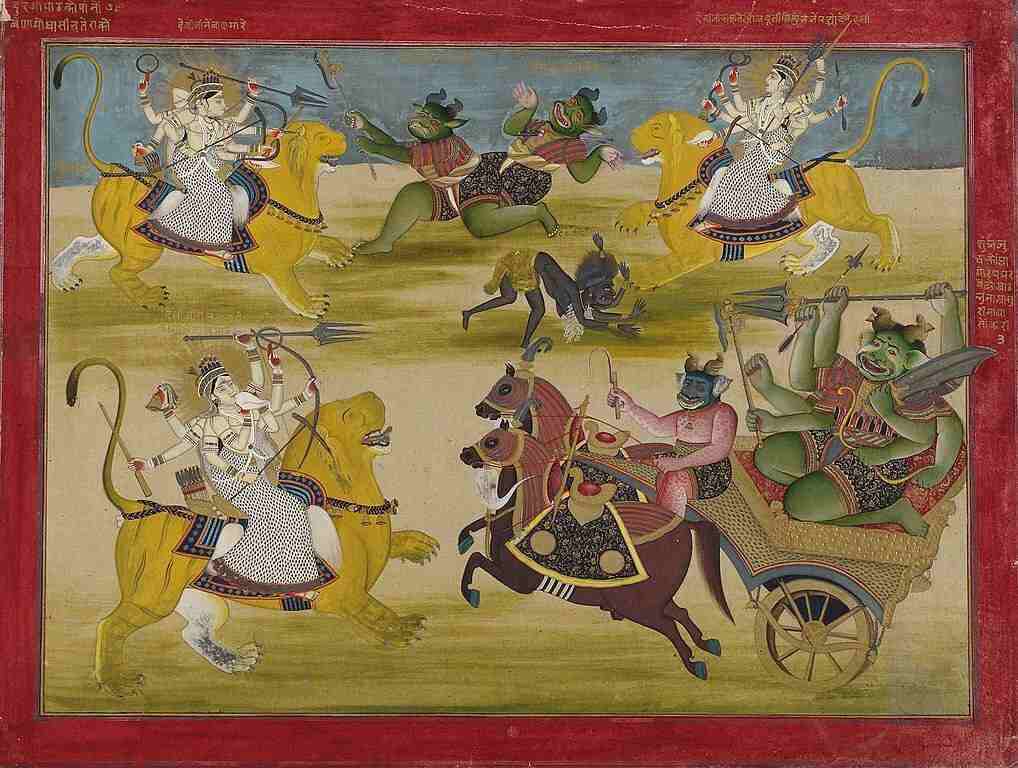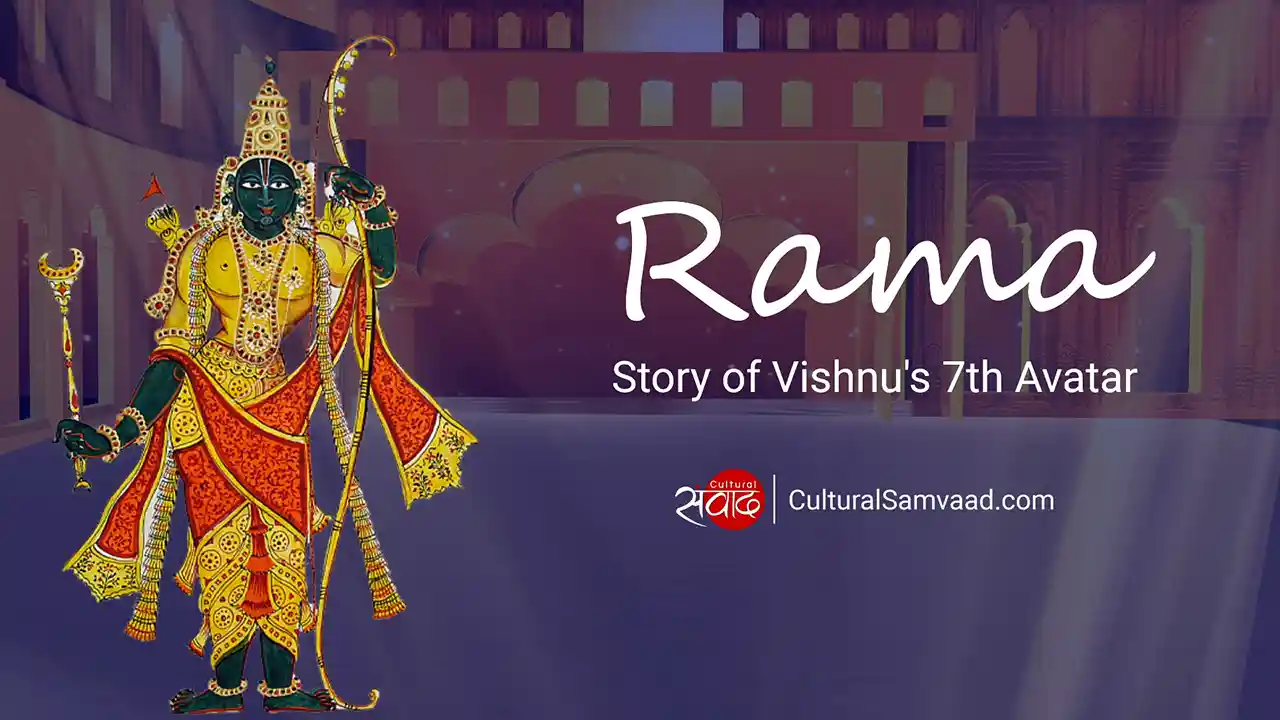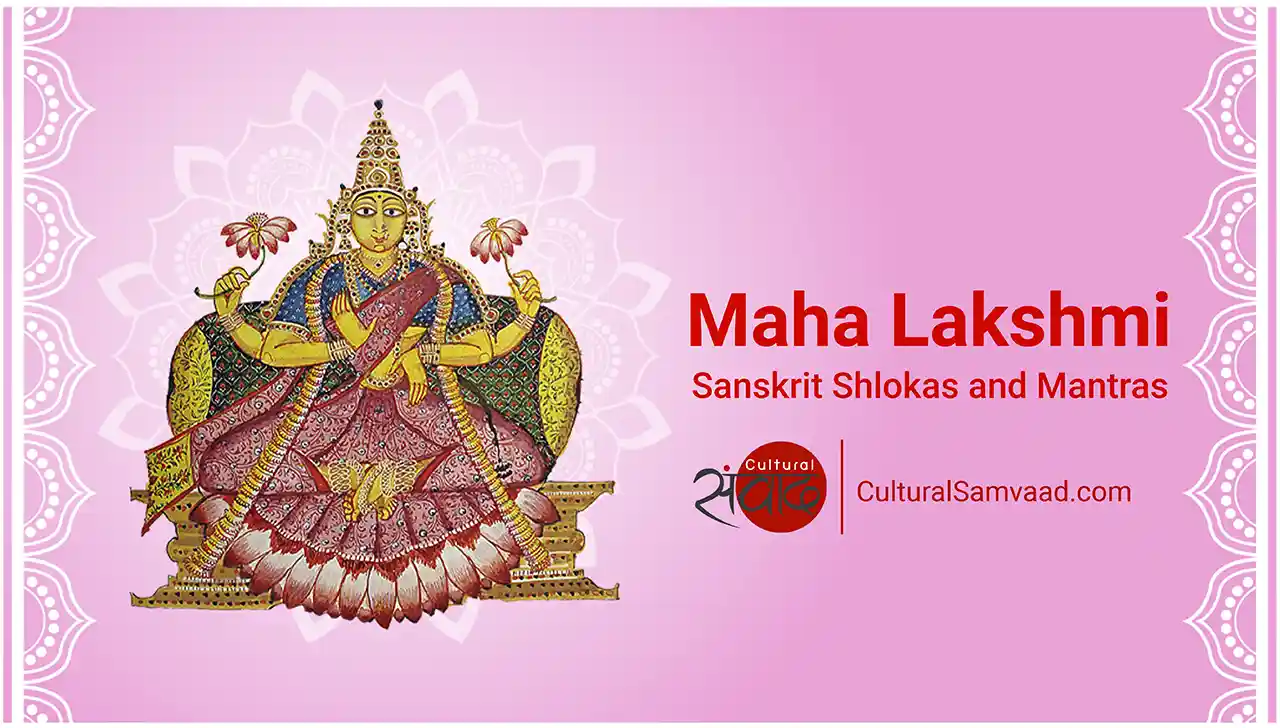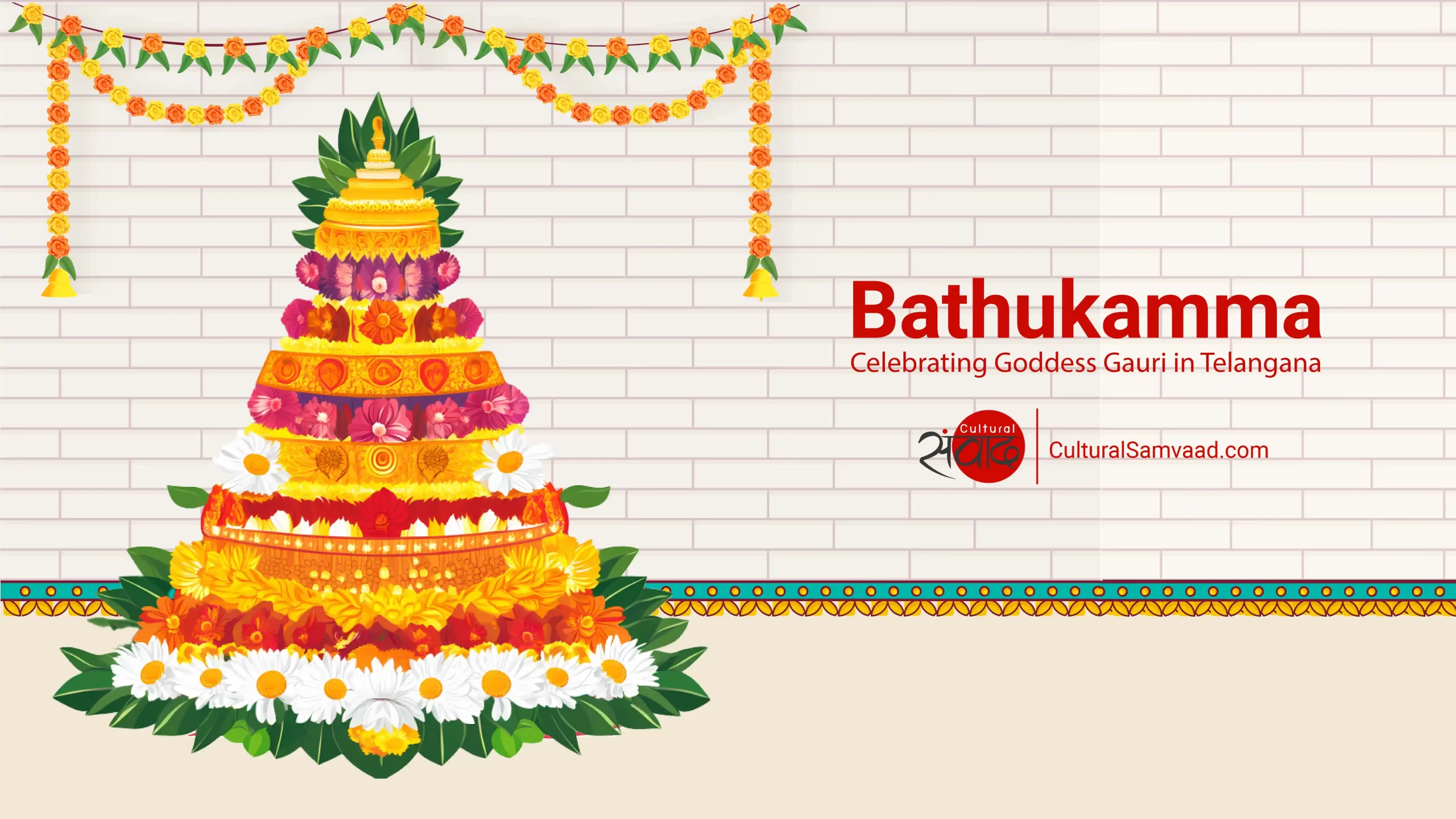Join Cultural Samvaad’s WhatsApp Community
The many stories of the great warrior Goddess, Durga, have continued to captivate, inspire and educate Indians and Hindus for millennia. These stories are narrated in multiple texts including the Puranas and Agamas. One of the most fascinating tales of Maa Durga, as she is fondly referred to, is the story of the destruction of the two great demons – Shumbha and Nishumbha. This narrative also weaves in the appearance of the terrible yet auspicious Kali and the valiant Matrikas. Perhaps, one of the earliest versions of this tale is found in the Durga Saptashati or Devi Mahatmya which is a part of the Markandeya Purana. Narrated over multiple chapters from Chapter 5 to Chapter 11 of the Chandi Paath, it is the third and last major katha of the text.
Introduction to the Devi Mahatmya
It is important to note that the names Durga, Ambika and Chandika have been used interchangeably for the great Devi while Kali and Chamunda have been used interchangeably for Maa Kali in the Saptashati and the practice continues till date.
The Story: Durga Ambika Annihilates Shumbha and Nishumbha
Long long ago, the devatas led by Indra and the demons led by Shumbha and Nishumbha engaged in a fierce battle. Devaraja Indra’s army was defeated by Shumbha and Nishumbha’s powerful forces. Shumbha and Nishumbha usurped the powers of all the devatas and started ruling the entire universe. The defeated and humiliated devatas went to Mount Kailash and prayed to Mata Parvati for help.
The charming Devi Ambika appeared from Mata Parvati to protect the Devatas and started residing on the magnificent Himalayas. One day, two asuras Chanda and Munda happened to behold the radiant Durga Devi. They immediately rushed to their masters Shumbha and Nishumbha, sang peans about her beauty and incited the two powerful rulers to subjugate her.
Shumbha and Nishumbha sent a great demon, Sugriva, as a messenger to call upon the Devi to come to their palace and marry either of them. Devi Ambika explained to Sugriva that she had taken a vow that she would marry only he who could defeat her in battle. The two mighty brothers were enraged when they heard that their proposal had been spurned by a mere woman.
They called upon one of their valiant generals Dhumralochan and ordered him to go and capture the Devi with his mighty army. Dhumralochan stood no chance. The Devi merely uttered ‘Hum’ and he burst into flames. An angry Devi and her vahana (vehicle), the ferocious tiger (also portrayed as a lion), destroyed the rest of the asura army in no time.

Stunned by the defeat of Dhumralochan, Shumbha and Nishumbha sent an even larger army under Chanda and Munda to fight with Ambika Devi. The precocious asuras rushed towards her to capture her. The Devi turned black with rage and from her forehead emerged the fierce and auspicious Kali. Maa Kali jumped into the battlefield and slaughtered the asura army. She devoured some, crushed some and battered others. Chanda and Munda attacked her with innumerable arrows and other weapons. Enraged, she rushed towards Chanda and beheaded him with her brilliant sword. Munda also met his end at her hands. A victorious Maa Kali presented the heads of Chanda and Munda to Devi Chandika who honoured her with the name Chamunda.
Eager to seek retribution, Shumbha and Nishumbha mobilised a gargantuan army and sent it to take on Devi Ambika. In the meanwhile, the devas also called upon their shaktis (powers which reside within). The fearless matrikas (mothers) – Brahmani, Maheshwari, Kaumari, Vaishnavi, Varahi, Narasimhi and Aindri made it to the battlefield in all their splendour to join Chandika and Chamunda. In a last-ditch effort to prevent more bloodshed, Chandika sent Lord Shiva as a messenger of peace and thus became Shivaduti. Blinded by their arrogance, the brothers turned down the proposal for peace.
A relentless battle ensued between the asuras and the matrikas. When the asuras started faltering, the ferocious Raktabeeja came forward. The Matrikas heightened their attack on him, but he was no ordinary asura. As soon as a single drop of his blood fell on the earth, another equally terrifying and huge Raktabeeja-like demon was born. Lo and behold, the battlefield was filled with innumerable asuras that looked like Raktabeeja. On seeing this ghastly sight, Devi Chamunda extended her tongue into infinity whereas Maa Chandika started attacking Raktabeeja continuously. Every drop of his blood fell on Kali’s tongue and as and when a demon appeared from that drop of blood, the ferocious Chamunda would immediately devour that asura.
Slowly all the blood in Raktabeeja’s body was drained out and the terrible demon came to an end. The matrikas were ecstatic and the devatas heaved a sigh of relief but the asura kings were infuriated.
They launched a dreadful attack on the Devi and the matrikas. Terrible sounds filled the atmosphere. There was devastation all around. The finale was in sight. Nishumbha and Chandika engaged in a fiery duel. She pierced his heart with a dart. Another valiant asura emerged from Nishumbha’ s heart but he was also slain by the Devi’s flaming sword. The terrible Nishumbha had perished.
Saddened by the end of this dear brother, Shumba challenged Devi Ambika to fight alone without the help of the matrikas. She obliged and all the matrikas who are, but her forms, merged into her. A fierce battle ensued between the Devi and the demon-king Shumba. They fought on the ground and they fought in the skies. They fought with the deadliest of weapons and they fought with their hands. Finally, Durga pierced Shumba with her spear and his lifeless body fell with a thundering thud. The asuras had been annihilated and cosmic order was restored.
The grateful devatas joined hands to worship the indomitable, the valiant, the all-powerful and the all-pervading Maa Chandika, Maa Chamunda and the Matrikas.
Symbolism of the Story
This multilayered narrative is replete with symbolism and has been interpreted differently which adds to the charm and timelessness of Indian purakathas (ancient Indian stories).
Raktabija is the one who is within each one of us. He is akin to our anger, our arrogance, our hatred and many other self-feeding, negative character traits which, if not reined in, in a timely manner, lead to our destruction. Shumbha and Nishumbha are the epitome of greed and pride and their annihilation is the fate that awaits the avaricious.
All devis are but a manifestation of the One Divine Feminine, the AdiShakti, and we may choose to address her by any name or worship any of her infinite forms.
The narrative is also an ode to the empowered status of women in more ways than one. The Devi is fiercely independent in her decision making and the goddesses are capable of winning every battle and every war that they choose to fight. The matrikas cannot and shall not be subjugated.
The eclectic reader will also notice parallels with other narratives in the purakatha genre which heightens their resonance.
The primordial shakti – Durga is unmanifest and yet she manifests herself when her devotees beseech her. May this Sanatan Shakti, this indomitable Durga continue to bless one and all.
देवि प्रपन्नार्तिहरे प्रसीद प्रसीद मातर्जगतोऽखिलस्य।
प्रसीद विश्वेश्वरि पाहि विश्वं त्वमीश्वरी देवि चराचरस्य॥
O Devi, you remove the sufferings of those who approach you and seek refuge in you. Please be gracious to us. O Mother of the Universe, please be benevolent. O Presiding Deity of this World, please protect one and all. O Devi, you are the ruler all that is moving and not moving in this cosmos.
Durga Saptashati 11.3 | दुर्गा सप्तशती ११.३






Add comment